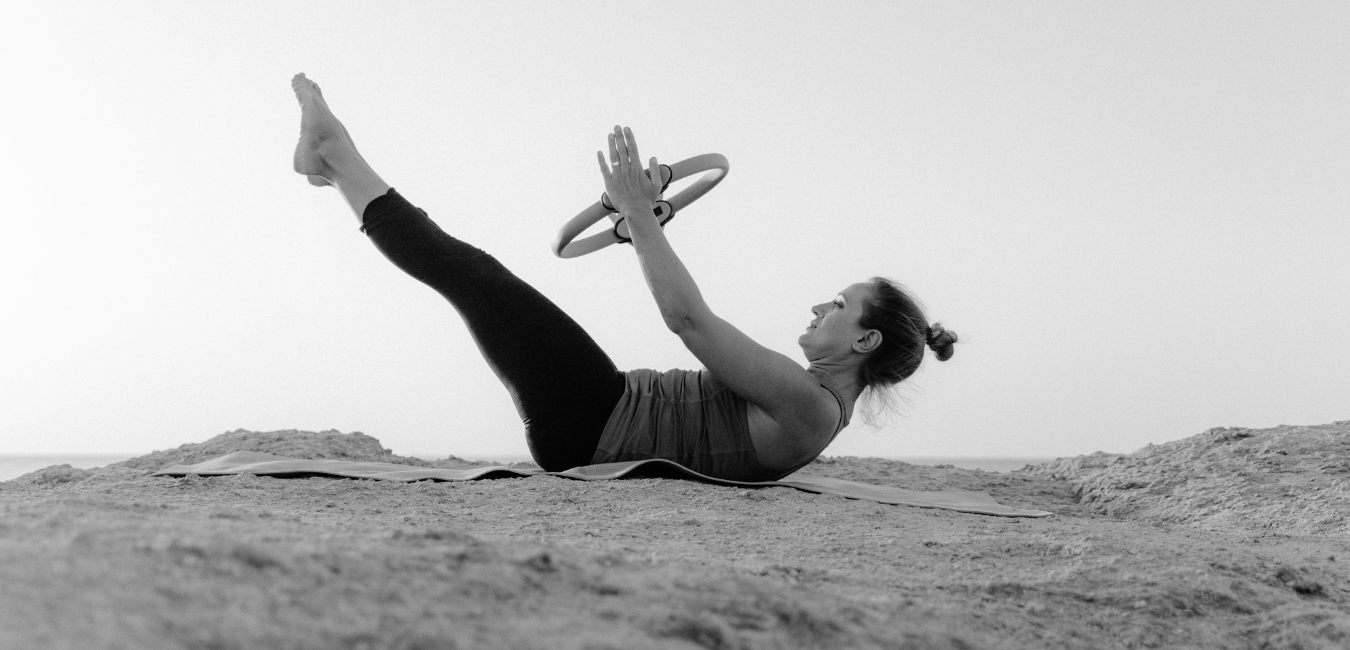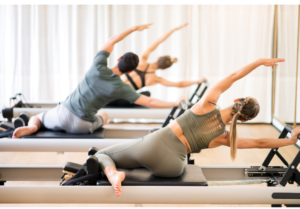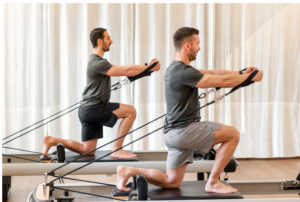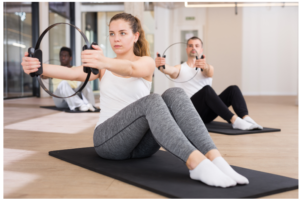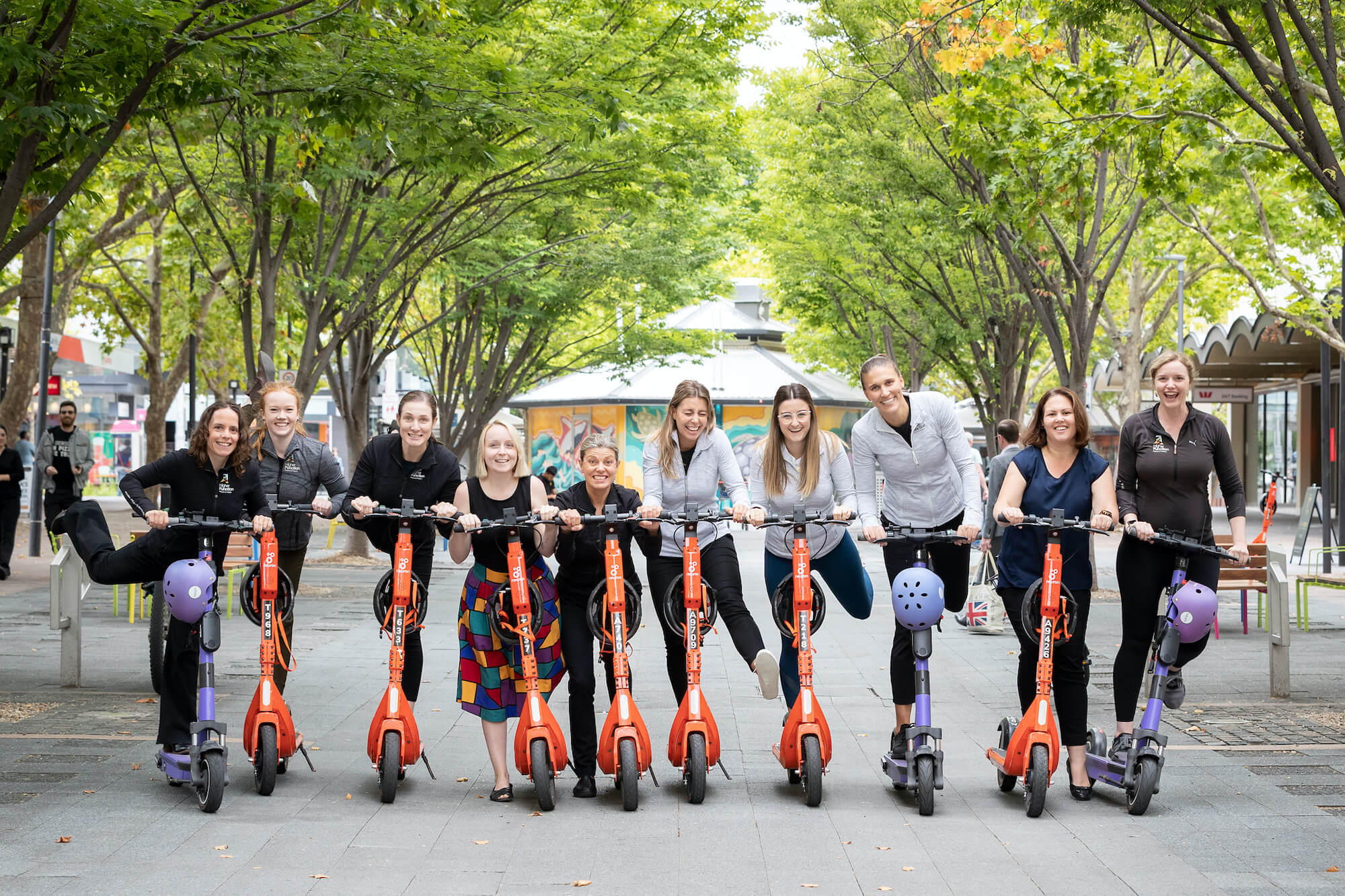History
Pilates is a type of mind-body exercise developed by German-born Joseph Pilates in the 1920’s. Joseph was a circus performer, boxer, and self-defence instructor who began working as an orderly in a hospital during the First World War. He worked with immobile patients and attached springs to their hospital beds to assist their movement and recovery, creating the development of the famous Pilates apparatus. Once he emigrated from England to the USA he opened a body-conditioning gym and taught Pilates as it was originally known as “Contrology”. It was only after his death in 1967 at the age of 83 that it became known as “Pilates”. Since then, it has increased in popularity.
Principles
The original principles of Pilates are:
- Breath
- Concentration
- Centring
- Control
- Precision
- Flow
Why do Physiotherapists love Pilates?
At Higher Function Physio & Pilates, Pilates forms a component of our Clinical Exercise classes. The principles of Pilates lend themselves well to how a physiotherapist approaches a patient’s rehabilitation. We cue movement, giving you the time and space to focus on that movement, with your breath, and control it through range, giving you any necessary feedback or guidance as you go. This reduces any bracing strategies, encourages more biomechanically efficient movement, and reduces any mal-adaptive movement behaviours that may be contributing to ongoing pain or dysfunction. It involves the whole body (head to toe!) and is a great way to both rehabilitate and exercise safely.
What can I expect from a Pilates class?
At Higher Function we have a wide range of traditional Pilates equipment including the Reformer, Trapeze Table (Caddilac), Spine Corrector, Wunda Chair and of course the mat! Depending on which class you book into, you may use one or more pieces of equipment, alongside other non-traditional Pilates equipment such as weights, balance discs, BOSU balls, fitballs and resistance bands to assist your rehabilitation or exercise journey.
Your instructor will “cue” movement through a combination of verbal and non-verbal cues throughout class. Verbal explanations include a description of the body movement, the use of imagery and visualisation, and cueing the breath for example “inhale as you lift your leg, exhale as you lower”. Non-verbal cueing includes tactile (hands on) feedback for example helping to set a shoulder position before engaging in arm movements.
Some of our favourite cues include “relax your shoulders down away from ears” or using imagery “your head is like a helium balloon floating toward the ceiling” to create axial elongation and strengthen your deep spinal muscles.
What is the difference between Mat Pilates and Reformer Pilates?
Both types of Pilates focus on improving the breath, strength (including core), stability throughout the joints, and body awareness. At Higher Function, our Physiotherapists run both Mat and Reformer Pilates, both in three different levels from level one (beginner) to level three (advanced). Being physiotherapist led, we create a class plan based upon the functional capacity of the participants in the class, keeping in mind any injuries or individual participants limitations to exercise. This allows us to not only prevent injury or worsening a musculoskeletal condition, but to also improve a patient’s prognosis and help them heal through exercise. For example, if you are pregnant, we modify classes to avoid having you lie on your back or load with too much force into single leg to prevent possible pelvic girdle pain. If you have wrist pain, we modify exercises to avoid prolonged weightbearing through the hands and adapt the equipment used for strengthening, as well as introduce specific exercises that will help to improve wrist range of movement and upper body strength.
Mat Pilates is essentially “floorwork” performed on a mat, however you may be lying on your stomach, back or side, kneeling, or standing to perform exercises. We use a variety of props including foam roller and dura disc to challenge your core and stability, weights and Therabands for added resistance, as well as stability balls and Magic Circles (2 more traditional Pilates equipment) to spice things up! Although both mat and reformer classes focus on breath, strength, alignment and control, Mat Pilates tends to focus more on stability – both at the trunk, pelvis and legs to improve core strength and balance. This class creates a whole body workout, but is particularly great for those with chronic or acute low back pain, reduced stability or balance.
Reformer Pilates is performed using a “Reformer” which is a spring-loaded piece of equipment to create resistance or assistance with dynamic movements. As a result of this, reformer classes tend to result in greater strengthening, through the use of concentric and eccentric muscle activation when resisting the springs. Similar to Mat Pilates, you can be lying on your stomach, back, side, kneeling, standing on the reformer or standing next to the reformer to perform exercises. You could be pulling on the reformer’s straps with your arms or legs, pushing on the footbar, moving the carriage, jumping on the jumpboard or standing upright on the reformer – the possibilities are endless and every class is different! We also use the short or long box, stability balls, Magic Circles, weighted poles, BOSU, Therabands or weights in these classes to create a fun hour and to keep things exciting and challenging.
Both types of Pilates classes result in improved body awareness, mobility, flexibility, strength, breathwork and rehabilitation from injury.
What is the difference between regular Pilates and Clinical Pilates?
Clinical Pilates (now recognised as Clinical Exercise) can only be taught by a qualified health professional, such as a physiotherapist or exercise physiologist.
In 2017, the Federal Government announced its plans to make certain natural therapies ineligible for private health insurance rebates. Among these was Pilates. The Government’s original position was that Pilates would not be rebatable, regardless of who delivers it or how it is delivered, as it is not an evidence-based treatment.
At our practice, we offer Clinical Exercise classes (formerly Clinical Pilates), which are claimable from private health insurers. Our classes are a mixture of clinically appropriate exercises focusing on correct movement patterns, including exercises delivered on Pilates equipment or exercises drawn from Pilates that target your particular needs. We provide these exercises within an evidence-based and therapeutic framework rather than purely for fitness. All classes are taught by a physiotherapist or exercise physiologist.
To attend Clinical Exercise Classes at Higher Function, a Clinical Exercise Assessment is required with one of our Physiotherapists or Exercise Physiologists before starting classes. Your specific functional needs will be addressed in each class.
We offer small group classes (Matwork, Reformer, Strong Bones and more) as well as individual exercise therapy (Independent Gym or Semi Private Group). Physios and Exercise Physiologists have the clinical knowledge and experience to safely modify exercises for individuals of all fitness levels and ages, as well as those with injuries, recovering from injury or who are pregnant, postnatal and more.
References
https://www.pilatesfoundation.com/pilates/the-history-of-pilates/
